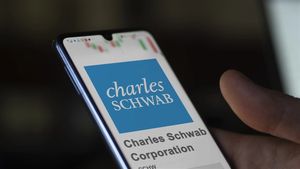Cambridge, MA, Aug. 29, 2024 (GLOBE NEWSWIRE) -- Cambridge, MA, August 29, 2024 – As gene and cell therapy and gene editing technologies continue to revolutionize the treatment of genetic diseases, a collaboration between researchers at MIT Sloan School of Management, Boston Children’s Hospital, Columbia University, and the N=1 Collaborative is focusing on how to make these groundbreaking treatments more affordable and accessible to patients worldwide.
In “How to Pay for Individualized Genetic Medicines”published on June 19 in Nature Medicine, the authors highlighted the need for sustainable, equitable models to deliver individualized genetic therapies, particularly for ultra-rare diseases that have historically been deemed commercially unviable under traditional biotech drug development models.
The article was authored by leading experts in gene and cell therapy, healthcare finance, and patient advocacy: Julia M. Y. Pian of Boston Children’s Hospital and the N=1 Collaborative; Nana Owusu of Columbia University Vagelos College of Physicians and Surgeons; Julia Vitarello, co-founder of the N=1 Collaborative and founder of Mila’s Miracle Foundation; Winston X. Yan, president of the N=1 Collaborative; Andrew W. Lo, the MIT Sloan Charles E. and Susan T. Harris Professor and director of MIT Sloan’s Laboratory for Financial Engineering; and Timothy W. Yu of the Yu Lab at Boston Children’s Hospital and co-founder of N=1 Collaborative. Their collective expertise spans decades of groundbreaking work in the field, contributing to significant advancements in personalized medicine.
Key takeaways from the article include three insights on how to make individualized gene therapies more affordable and, therefore, more widely accessible:
- Efficiency Through Collaboration and Data Sharing: Drawing parallels to the evolution of organ transplantation, the researchers underscore the importance of collaboration among regulatory bodies, academic institutions, and industry. Sharing data and best practices can streamline the development process, improve safety and efficacy, and ultimately reduce costs.
- Regulatory Innovation: Regulatory frameworks need to be tailored to the unique nature of individualized genetic therapies. Recent legislative support includes the FDA Modernization Act 2.0, which eliminates the requirement for animal testing before clinical trials. Further regulatory innovation can create pathways for faster, more cost-effective development.
- Innovative Funding Models: To address the high upfront costs, the article proposes implementing/expanding several funding models specifically for individualized genetic medicine, including:
-
- Subscription Payment Model: Similar to the model used for Hepatitis C treatment, this approach decouples the number of patients from potential financial rewards, making ultra-rare disease treatments commercially viable.
- Procedural Billing: Viewing the development of gene therapies as a medical procedure could create a new revenue stream for academic and commercial organizations, fostering continued innovation.
One example the researchers cited is the significant upfront cost of individualized antisense oligonucleotides (ASOs)—estimated at $1.4 to $2 million over a one-to-two-year period for a single individual. Despite the high initial investment, the cost of manufacturing a lifetime supply of an ASO can be as low as $40,000 per patient.
Dr. Yu commented, “It’s early days, but one can foresee a time when such individualized therapies are commonplace. We owe it to patients to ensure they’re made as widely accessible as possible.”
Professor Lo added, “Individualized genetic therapies are now a scientific reality, offering hope to many patients with ultra-rare diseases. But to make these therapies routine, new systems must be developed to deliver them equitably and sustainably.”
The authors note that by improving cost efficiencies through collaboration, data sharing, and regulatory innovation, and by exploring innovative payment models, gene therapies can become a viable option for many patients in need.
Attachment

Casey Bayer MIT Sloan School of Management 914.584.9095 bayerc@mit.edu Patricia Favreau MIT Sloan School of Management 617-595-8533 pfavreau@mit.edu






